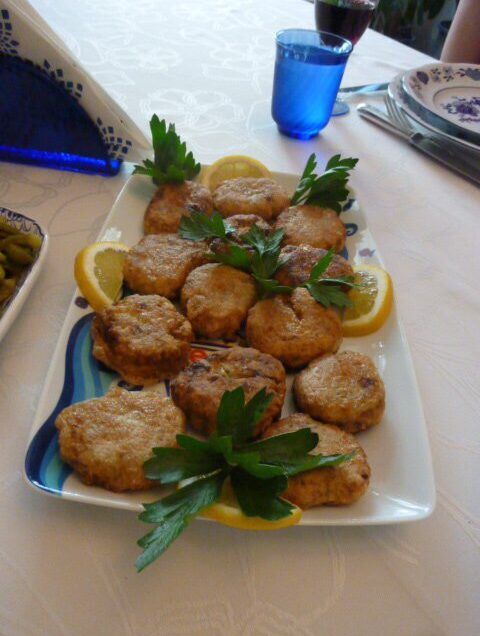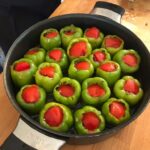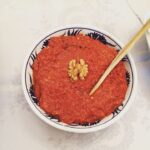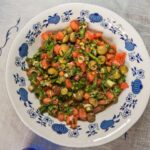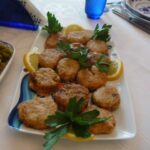Turkish Sephardic Cuisine
THE SEPHARDIC CUISINE IN TURKEY
The Sephardic Jews arrived in the Ottoman Empire in 1492. They came from Spain when there was the Spanish Inquisition. The Spanish king and queen, Ferdinand of Aragon and Isabel of Castille decided to make a united Catholic Spain so they ordered all the Jews and Muslims to either convert or leave. About 200.000 Jews were exiled and came to the Ottoman Empire. Sultan Bayezid II received them and was happy with the technology and knowledge they brought. The Jews settled mainly in the Aegean region, Istanbul, Thrace and the Balkans.
Sefarad is the name given to Spain in Hebrew, and as these Spanish Jews came from Sefarad, they called themselves Sephardim, their culture Sephardic. So when we talk about Sephardic cuisine, we are talking about the cuisine of these Spanish Jews, who brought their culinary traditions with them from Spain and Portugal. Some of these people did not come straight from Spain to the Ottoman Empire. There were numerous Jews who came via France, Italy and then of course the Balkans, which already belonged to the Ottomans at the time. It is not so easy to characterize what we call “Sephardic Cuisine” because ever since the 15th century, wherever the Sephardim went, they adapted their cooking to the techniques, tastes and ingredients that they found in the lands to which they migrated, all the while remaining faithful to their ancient cultural traditions and Iberian culinary heritage.
The Jews in the Ottoman Empire lived in their own areas, not because they were pressured to do so but because they preferred to live with the people from the regions they came from. However, as these were not “ghettos” , some amount of interaction was inevitable with the cultures around them and of course mutual borrowing between, Jews, Greeks, Armenians and Muslim Turks occurred naturally. Cooking rules and recipes were passed down from mother to daughter and resulted in a treasury of culinary ideas that continued being transmitted throughout the centuries up to the present day.
Two important factors characterized Sephardic cooking in Turkey: the Spanish heritage and the Turkish culture with additional traditions, flavors and techniques imported from the Greeks, who were very famous for their culinary skills. An interchange of culinary traditions, the borrowing of the tasty from one’s neighbors seemed to be common usage in the days when people socialized with their neighbors. We read a lot of stories of Muslims visiting their Jewish neighbors on their religious holidays and being offered of their traditional dishes and of Jews visiting their Muslim neighbors on their holidays to partake of the delicious sweets and desserts.
There are a multitude of dishes with vegetables in the Sephardic cuisine. You can create a whole meal without any meat at all as meat was always the most expensive ingredient to buy for a family. So we have a lot of very tasty dishes with vegetables that were used to their very last bits, even their peels. A very good example of this is the dish made from squash peels, called “kashkarikas”. It is a delicious dish eaten cold, like a salad, with olive oil and lemon and dill.
Another example would be the very tasty pie that can be made from the leaves of red beets. You can cut these leaves into small chunks and then add cheese (white and yellow), eggs and bread crumbs to it and then bake the mixture in the oven you get an incredibly delicious dish, which is both nourishing and very filling.
In summer, when tomatoes are plentiful and very cheap you could make a very substantial and delicious entrée, called “Armi de tomat”, a tomato and rice stew is made of tomatoes, onions and parsley. This is a dish that is specifically sephardic, just like “kashkarikas”, and red beet leaves pie, not known by the wider Muslim Turkish community.
As to the dishes with meat, we have a lot of dishes made with minced meat and most of these are köftes of one form or another. The most famous of these is the leek meatballs or koftes de prasa, as we call them.
The king of the vegetables was of course, the aubergine, both in the Sephardic and the Turkish cuisines. It is not surprising therefore that every meal in the summertime includes aubergines in many different forms, fried, baked, stuffed, made into pies etc. etc. Empanadas, as they are called in Spain, are usually referred to as borekas or borekitas in the Sephardic cuisine in Turkey, utilizing the word börek for the same type of pastries from Turkish. A tapada is prepared in a pie fashion, baked in a tray with a variety of fillings, best of course with aubergines.
Beef and lamb are broiled, baked and cooked with vegetables and spices and have a great taste. The juice of the cooked meat is never thrown away but is used in making rice or pasta or just vegetables. The same applies to chicken.
A very special characteristic of Sephardic cooking is the fact that it uses a lot of sour sauces, much more than all other cuisines. Vegetables like ocra, artichoke, spinach, cabbage, and all their derivatives with meat are cooked with a lot more lemon than you will see in the Turkish cuisine, The most characteristic dish in contemporary Turkish Sephardic cooking is called gaya kon avramila, fish in sour plum sauce.
Another example, regarding vivid heritages of cross-cultural interaction is that of a very much loved cheese, called kaşar. Along with white cheese (beyaz peynir) it constitutes one of the most popular cheeses of Turkish cuisine. Yet, no one ever thinks that it has a Jewish connection. It seems that kaşar was brought over by Jews from Spain, who referred to it as kaşer, the Ladino for kosher.
Contemporary Sephardic cookery is also rich in terms of desserts and confectioneries. Famous quince paste of Spain, membrilla exists as bimbriyo (quince paste) or as helva de bimbriyo in Sephardic cuisine.
Going through a number of changes over the generations, these Sephardic Cooking traditions are left to us as an inheratence. Unfortunately the changing conditions of life have caused their gradual disappereance.

